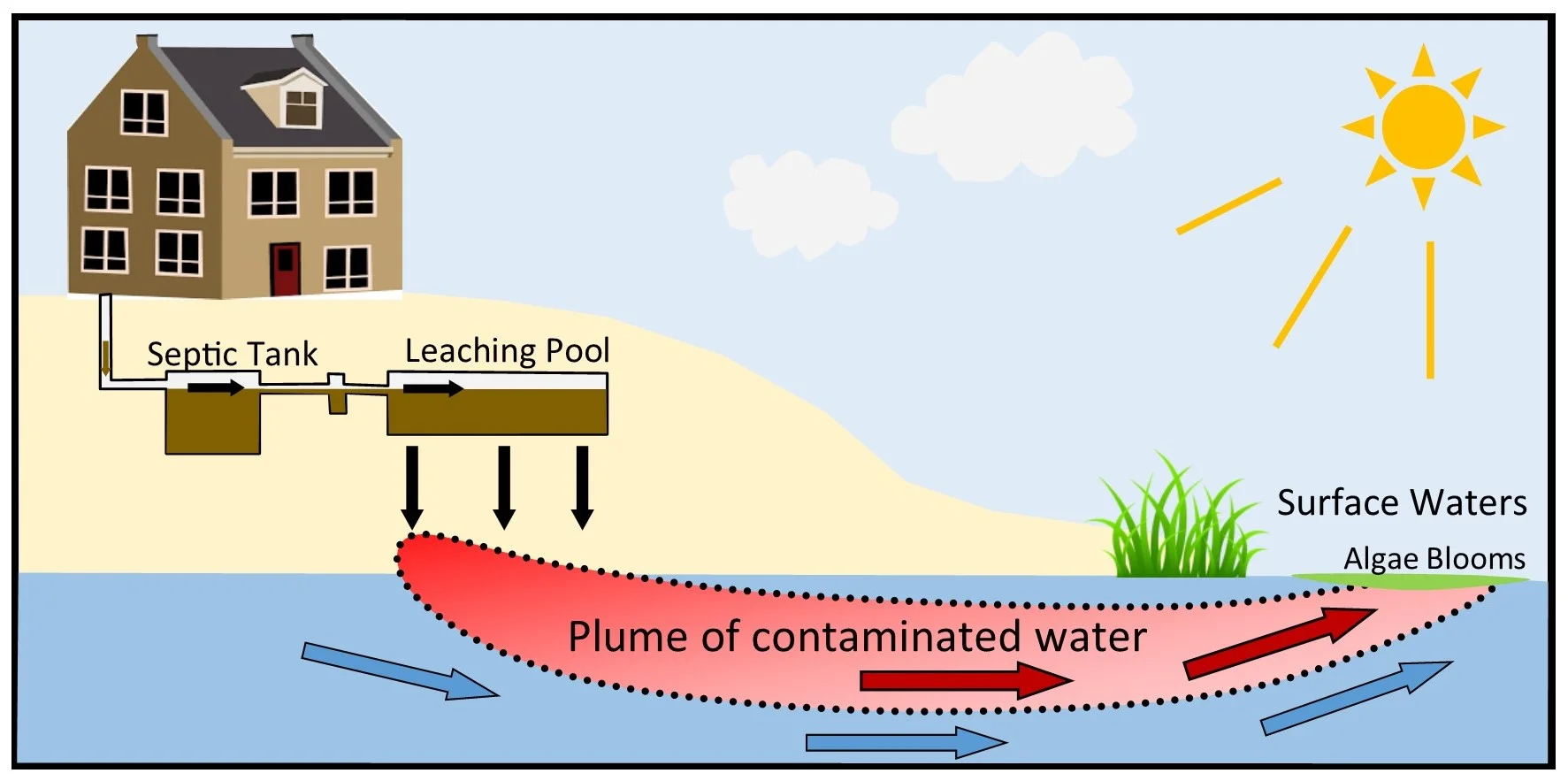Septic Systems Can’t Be Out of Sight Out of Mind Anymore
Eastern Long Island’s primary source of nitrogen pollution is wastewater from septic systems and cesspools. Conventional septic systems were not designed to filter nitrogen and do not effectively remove nitrogen from wastewater as it leaches into and pollutes our groundwater (which happens to be our drinking water) and eventually surface waters.
In Suffolk County, over 70% of residences utilize conventional septic system or cesspools and are not hooked up to a sewer system. According to Suffolk County, our primary source of drinking water, the Magothy Aquifer, experienced a 200% increase in nitrogen pollution since the late 1980’s.
We are surrounded by water, we live on top of our drinking water. It comes as no surprise that nitrogen pollution has had devastating consequences for our public health, economy, recreational capacities and general way of life. It’s responsible for Long Island’s notorious, harmful algal blooms commonly referred to as brown, red or rust tides. It’s also caused fish kills, shellfish bed closures, beach closures and more.
Turning the tide, so to speak, is not going to be easy, however, the widespread use of Innovative and Alternative Onsite Wastewater Treatment Systems (I/A OWTS) can effectively prevent nitrogen pollution stemming from wastewater. It’s an exciting time for homeowners that want to make a demonstrable, positive impact on our water pollution issues. New York State, Suffolk County and several East End towns are offering generous grants and rebates that nearly cover the entire cost of these systems. Check out Suffolk County’s comprehensive website Reclaim Our Water to achieve a better understanding of the issue and solution.
Conventional Septic System
Advanced Nitrogen Reducing System
Who’s Working On the Nitrogen Issue?
Suffolk County has aggressively addressed nitrogen pollution by amending the existing sanitary code and importantly providing vital funding to homeowners in order to begin to create the widespread transition from existing polluting cesspools and septic systems to advanced treatment technology.
Center for Clean Water Technology
Based out of Stony Brook University, the Center for Clean Water Technology is focused on developing advanced-level technology that removes nitrogen effectively and efficiently from wastewater.
Peconic Estuary Program
Nitrogen pollution is the Peconic Estuary Systems greatest water quality threat. The PEP conducts important monitoring, research, reporting and performs an educational function.
Peconic Green Growth
Peconic Green Growth provides a number of studies and educational resources as well as providing expertise on advanced wastewater treatment technologies.
New York State Department of Environmental Conservation
In 2015, the NYSDEC established the Long Island Nitrogen Action Plan (LINAP), a comprehensive, multi-year initiative to target sources of nitrogen polluting Long Island’s waters and to establish policies and initiatives to reduce pollution.




